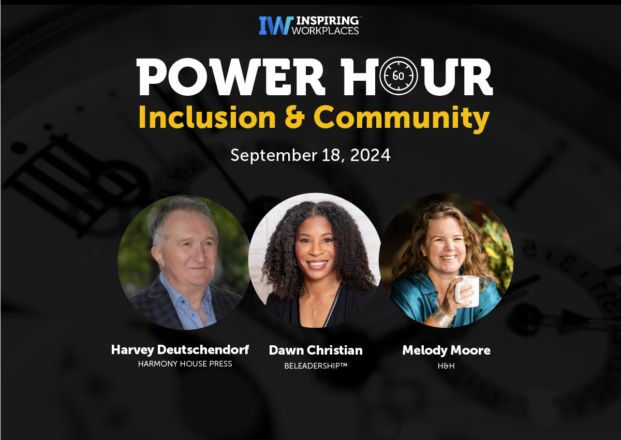
04th April 2025
How Leaders Can Fix the Workplace Communication Crisis in 2025

In today’s fast-paced, hybrid workplace, communication is strained and connection is suffering. Leaders must shift from reactive to intentional communication. By embracing self-awareness, vulnerability, empathetic listening, and meaningful connection, they can rebuild trust, drive innovation, and create cultures where communication becomes the foundation for collaboration, performance, and team well-being.
This article was written by Alison Myers and published in HR Daily Advisor.
Communication today feels like a relentless loop of Zoom calls, Teams meetings, and overflowing inboxes. We jump from task to task, rarely pausing to think, breathe, or connect. Even a well-intentioned text can land wrong, leaving teammates feeling more isolated than ever.
Nearly half of workers—45%— feel emotionally drained by the end of the day and 44% report burnout. This isn’t just about exhaustion; it’s about disconnection. Workplaces are struggling to navigate conflict, foster meaningful relationships, and adapt to new norms. Innovation and collaboration are suffering as a result.
Progress doesn’t come from pushing harder. It comes from stepping back—creating intentional spaces to connect, reset and realign.
The Impact of the Crisis
A significant challenge is the loss of non-verbal communication cues. According to Albert Mehrabian’s research, 93% of communication comes from elements other than words—7% from the actual words used, 38% from tone of voice and 55% from body language, especially facial expressions. Years of masked interactions and remote work have diminished these critical elements, leaving communication incomplete and often misunderstood.
Compounding this is the loss of grace in conversations. In today’s fast-paced world, we don’t pause to ask, “Is that what they really meant?” Instead, we react—getting defensive or shutting down before clarity can be achieved. This breakdown doesn’t just hinder relationships; it stalls productivity, stifles innovation and limits a team’s ability to move forward. In a world that demands constant creation and adaptation, these lapses can be the difference between thriving and falling behind.
Four Tenants of Courageous, Compassionate Communications
Navigating today’s communication challenges requires intentional leadership. These strategies can foster clarity, trust and collaboration:
1. Start with self-awareness.
Leadership begins with looking inward. The way we communicate reflects our blind spots, biases and frustrations. Without this awareness, leaders risk perpetuating the dynamics they seek to change.
Ask yourself:
- What needs to be said that I’m not saying?
- What am I saying that isn’t being heard?
- What’s being said that I’m not hearing?
Before any meaningful conversation, consider who is showing up: Are you bringing frustration or exhaustion into the interaction? Pause to reflect: Which version of me is about to engage and how might that affect the conversation?
Next, extend that thoughtfulness to others. Ask yourself: What might they be carrying? Caregiving responsibilities, a tough commute, or personal struggles can all influence behavior. Recognizing these dynamics fosters empathy and paves the way for more productive conversations.
2. Create intentional frameworks for communication.
Every conversation, meeting, or interaction is an opportunity to build connection—but only if it’s approached with intention. Too often, conversations happen without a clear purpose, leading to misunderstandings and frustration.
Clarity is the foundation of effective communication. Begin by defining the scope and goals of each interaction. Instead of diving into vague discussions, set expectations: “This meeting is about resolving X. Let’s focus on solutions and next steps.”
True collaboration happens when team members feel included. Ask questions like:
- Who do you need to be to contribute effectively?
- What do you need to do to achieve these goals?
- What resources or support do you need to succeed?
Intentionality also means recognizing when conditions aren’t right. For example, I once had a client say during a Zoom call, “I don’t feel like being on screen today.” My response? “Let’s reschedule.” Non-verbal cues are vital for meaningful interaction.
In today’s transactional communication culture, leaders must prioritize true engagement, ensuring every interaction has purpose and focus.
3. Lead with vulnerability and have hard conversations.
Difficult conversations are where leadership is tested. True leadership means taking 100% responsibility for communication outcomes—even when the failure isn’t entirely yours.
Imagine saying, “We lost this account because of my oversight, but here’s how we’ll improve.” This kind of vulnerability builds trust and teaches your team that mistakes aren’t the end, but instead opportunities to grow.
However, vulnerability must be paired with intentional listening, which is often overlooked but critical for connection. Listening exists on a spectrum and leaders must aim for the highest levels to foster trust:
- Ignoring: Physically present but distracted—checking emails or thinking about something else. This signals disrespect and erodes relationships.
- Pretending to listen: Offering passive acknowledgments without real engagement. Instead, admit, “I’m distracted; can we reconnect in 15 minutes?” Honesty builds team culture.
- Selective listening: Filtering information to confirm biases. While it might work in personal relationships, it damages team dynamics and stifles innovation.
- Active listening: Fully focusing on words, tone and body language. This approach is key for productive dialogue and developing team members.
- Empathetic listening: The deepest form of listening, where leaders tune into unspoken cues, emotions and context. This builds trust and makes employees feel valued.
As leaders, we need to remain in the last two zones — active or empathetic listening as much as possible. Generative listening—engaging so fully that the conversation sparks ideas and solutions—is the “magic” that drives teams forward. While uncomfortable in today’s fast-paced culture, this level of presence is essential for effective leadership.
When teams feel truly heard, they’re more willing to engage, innovate and share openly. Paired with vulnerability, intentional listening creates the foundation for trust and collaboration.
4. Redefine workplace connections.
Hybrid work has transformed how we engage, but connection must remain central to the workplace. Being in the office should be purposeful—centered on collaboration and relationship-building, not just physical presence. Leaders must ask: Why are employees coming in and how can that time be meaningful? (…)
To continue reading this article in full click here: Workplace Communication Crisis? Business Leaders Are the Answer






